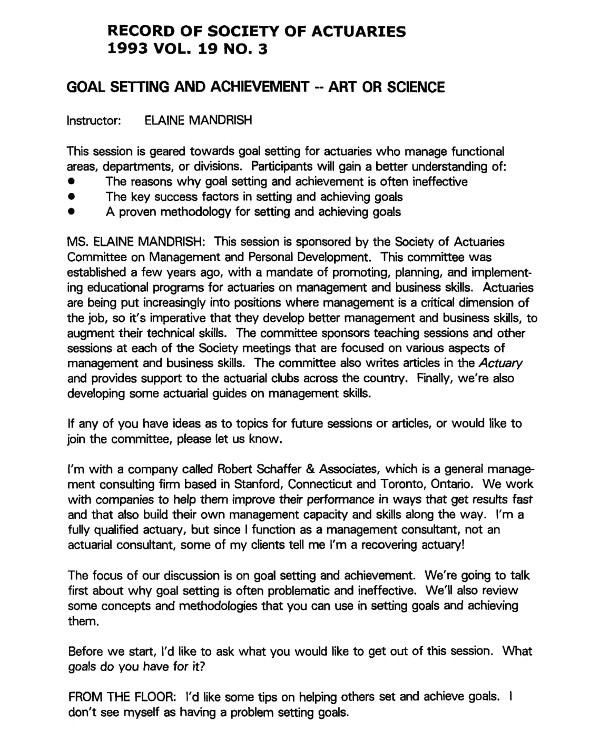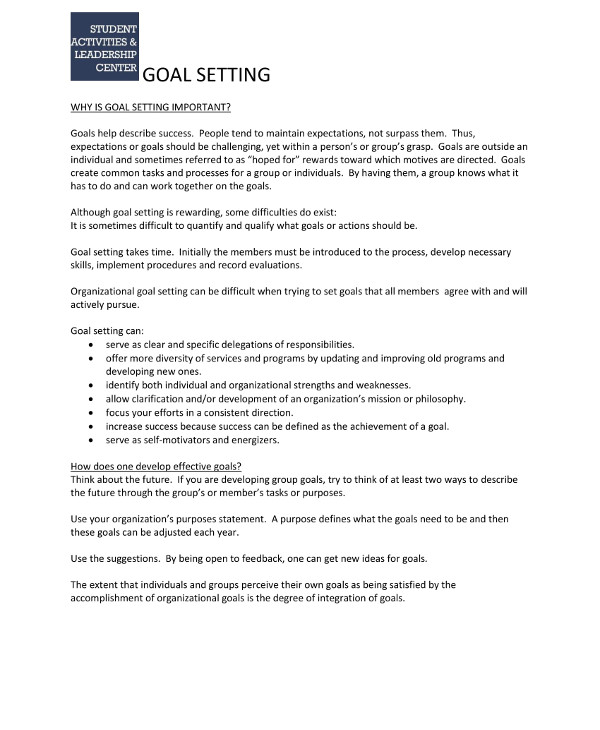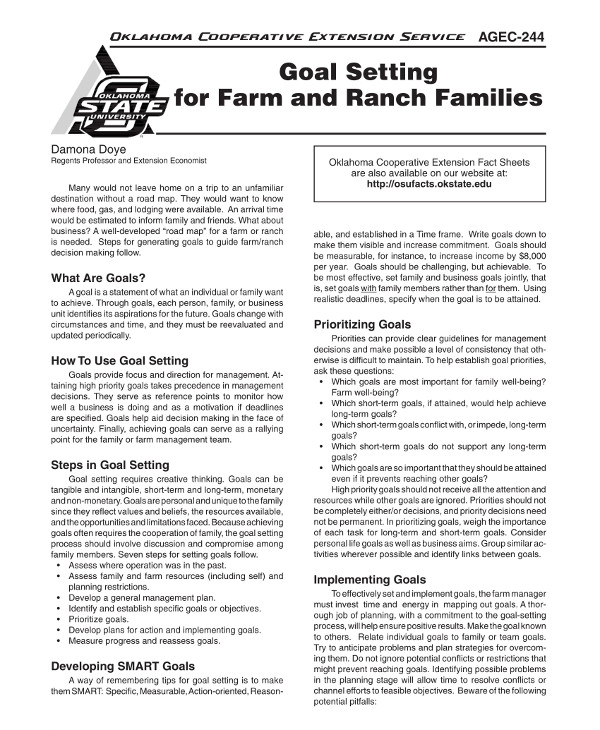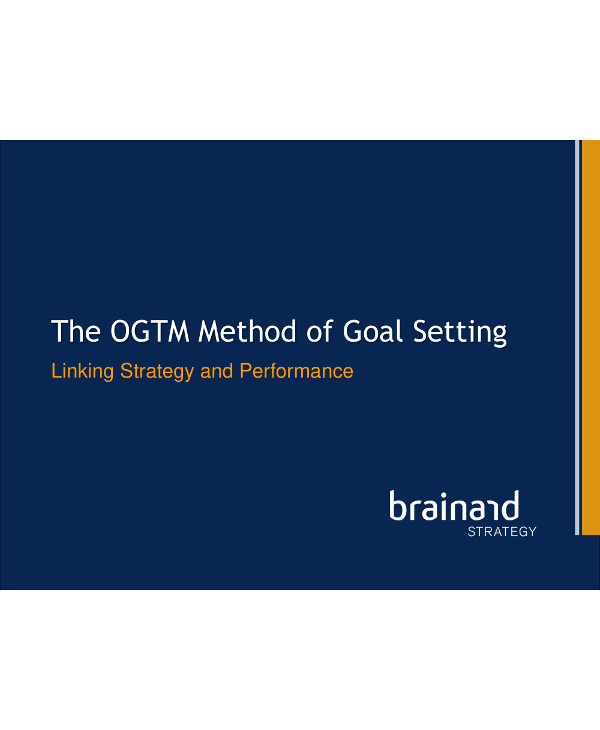9+ Business Goal Setting Examples to Download
Want to know the secrets of a successful company? Want to start right in your business? You are probably searching ways on how to survive and succeed in a business world full of competitors and stumble upon this article in the hopes that you will find answers that you are seeking for. Well, success can only be measured if you have clearly set your goals. You can say that you are successful when, within your planned time frame, you have achieved the goals you set. Hence, the first thing that you must work on is to set goals that would help improve, enhance, and grow your company’s operations because through these goals, you can plan for the specific actions that you need toward achieving them. You may also see teacher goals examples.
Indeed, having a proper business goal setting is the first important step that you must take in order for your company to grow and be successful. So, whenever you get yourself stuck at the thought on how to plan for, perform, or write business goal setting, you can always refer to the comprehensive examples of business goal setting displayed below. You may also check out other related examples as well through these links:
Actuaries Business Goal Setting Example
Detailed Business Goal Setting Example
Discussion on Business Goal Setting Example
Principles in Business Goal Setting
Goal setting must be your first priority in order for you to have a guide on what you are going to do, perform, or implement. You might think that setting goal is easy; however, there are a lot of things that you need to consider such as your competitors, the capacity of your employees, the resources of your company, your competitors, the internal control, and many others related setting goals. But one should not be overwhelmed by these considerations, and instead focus on analyzing what goals might be appropriate for the company. You may also see personal goal setting examples.
In order to help you plan out your business goal setting, below are some important principles that you must know and perform before you set your long-term company goals.
1. Perform SWOT Analysis
SWOT analysis is a strategic planning model utilized by many entities in order to improve in their operation. This will help you identify your strengths, weaknesses, opportunities, and threats, hence SWOT analysis. This can be very helpful in your goal setting since you can determine not only your advantage and edge over your competitors but also the aspects in your business that needs to be improved. This is like getting to know more about characteristics and personality of your company.
2. Do Internal and External Benchmarking
For internal benchmarking, this will help you compare performance of various areas across your entity. Through this, you can assess which area is doing well and which area needs to be improved. On the other hand, for external benchmarking, this will aid you in understanding more about your competitors as well as the methods and strategies that they are implementing. Hence, through benchmarking, you become aware of your standing in terms of your performance. You may also see smart goal setting examples.
Farm and Ranch Business Goal Setting Example
OGTM Method of Goal Setting Example
Perspective on Business Goal Setting Example
3. Run a Market Analysis
In order for you to run your business smoothly, another thing that you must consider is running a market analysis. This involves studying the attractiveness and dynamics of a certain market. You must assess your market both quantitatively and qualitatively through evaluating the size of the market both in volume and in value, various customer segments and buying patterns, key success factors, distribution channels, industry cost structure, economic environment in terms of barriers to entry and regulation, as well as the competition.
4. Review Your Past Performance
Knowing the past performance is important so you will understand where you are standing at this point. You will know what went wrong during your planning, what strategies you need to omit, what strategies you need to incorporate, what areas you need to strengthen, and many other important facts that you need to know about your company. You must also note your lapses from the past so you will not keep doing it in your current planning as well as in your future planning. You may also see employee goal setting examples.
5. Ask Feedback and Input from Employees
It is also important that you will ask feedback, opinions, and inputs from your employees as they can provide you with a different perspective and a fresh idea. Sometimes, you need to take a step back to see what you are into because the closer you get to something, the tougher it is to see it. Note that if you ask for input from your employees, make sure that you are assessing those ideas carefully and that you open to actually using it. Otherwise, they might get discourage and will less likely offer their ideas in the future. You may also see life goal examples.
6. Determine Who Should Be Involved
Depending on the size of your organization, you must determine who must be part of the conversation and planning regarding your goal. Usually, for large entities, the primary persons involved are the key persons, the management, or the board of directors. For medium-sized entities, senior leadership can also be part of planning and preparation. Lastly, for small entities, they can involve mid-level managers to take part of goal setting. You may also see examples of corporate goals.
Principles on Business Goal Setting Example
SMART Business Goal Setting Worksheet Example
7. Provide Some Pre-reading Papers
Before you gather everyone for your goal setting activity, it is recommended that you provide them some pre-reading papers that would serve as their homework so they can come prepared. Everyone in your meeting must be on the same page the moment you are going to discuss something regarding the tasks. This would also give them enough time to generate ideas and contemplate on some things before the meeting. You may also see department goals.
8. Tie Your Goal to Your Mission and Vision
Make sure that when you set goals, this must be tied and in accordance with your mission and vision. Your goals, mission, and vision must go together in the long run, and they must be heading in the same direction. If your goal is not related to your mission and vision, it is unlikely that your company will grow and, in turn, will achieve its mission. You may also see academic goal examples.
9. Be More Descriptive and Specific
In your goal setting, make sure that you are very specific and descriptive in order for everyone in the team to understand each goal in the same way. Moreover, it is better to specify your goals in terms of quantity and deadline. An ambiguous and very broad goal can be “increasing our sales.” Instead, you can be more specific by stating it this “have a target sales of $10,000 per week.” Through this, your next steps would also become specific. You may also see marketing goals.
10. Create Realistic Goals
The goals that you set must be realistic enough for your company. It is something that is within the realm of possibility. It must be within your budget, your company, and something that your company can achieve. Although it it is great to have stretch goals, you must also consider if you can achieve them knowing your capacities and boundaries. Hence, assess if the goals that you have set are realistic. You may also see annual goals.
11. Create Goals that Are Appropriately Sized
There are some goals that are too large or too long. In order to make it more simple and specific, you break it down into small specific steps in the form of objectives. You must also have target dates for each of the steps of your goal. In this way, it is easier for you not only to implement them but also to monitor which tasks you still need to perform. There is a higher possibility that you can complete the objectives if you will break them down into the smallest possible steps that you can think of. You may also see inspiring communication goals.
12. Make Sure Your Goals Are Measurable
You must also consider whether your goals are measurable. Your goal and the steps toward your goal would become useless if you cannot track, measure, or analyze your goal in any way. Measuring what you have achieved so far is essential so that you can apply proper actions for you to stay on the track leading to your goals. You may also see life goal examples.
13. Consider the Actions You Need to Take in Order to Achieve Your Goals
You must carefully think what specific actions you need to take to achieve your goals. This is because sometimes, contradictions might arise across your goals. For example, one of your goals is to maximize profit. However, you might also have another goal which is to have a 100% customer satisfaction. In this case, these things may be incongruent with each other but you have to carefully think of ways to achieve these goals. You may also see professional goals.
14. Designate Responsibilities for Each of Your Goals
You must designate responsibilities and examine who will be responsible for each of your goals. For example, assign who will ensure that progress reports will take place each month, assign who will ensure that everyone stays on track and within the time schedule, etc. To assure continuous advancement, you must consider designating roles and responsibilities to the different members of your team. You may also see goal journal examples.
15. Consider Your Budget and Resources
If you are to set your goals, you must also consider the budget of your company as well as other available resources. Hence, in each of your proposed goals, you need to identify the resources that you will need in order to achieve that certain goal. Commonly, the constraint in every goal is the fund. Funds are usually limited in an entity. Hence, you must be wise on how you use funds accordingly. You may also see mentoring goals examples.
Strategic Planning and Goal Setting Example
Vision and Business Goal Setting Example
16. Meet and Update Regularly
After your primary meeting with the people involved in goal setting. You cannot simply relax and observe what will happen next. Instead, you must ensure that everyone involved stays on track no matter how much the time goes by. You must also continue to monitor what you have implemented in case there might be adjustments required along the way. Changes are inevitable, so do not hesitate to make adjustments in your plans. You may also see educational goals.
17. Communicate Your Goals Internally
After you and your team involved in the goal setting are done with your discussions, everyone in the organization must know and understand the goals in order for them to be part of the implementation of those goals. They must also understand how their performance impact the goals as well as the overall success of the company. You may also see investment goals.
18. Select Appropriate Data to Measure and Monitor
Lastly, once you have already set your goals and communicate it t everyone in the organization, you must select measures that will help you in monitoring and tracking your performance toward each goal that you are setting. You have to carefully select the appropriate data that you measure and monitor, which will be the basis of your adjustments in the future tasks, steps, and objectives. You may also see job goals.
Ready, Set, Goal
Preparation is indeed important before you take an action. Setting the goals for your business is needed in order for you to stay on track and focused. It serves as your north star, the one that keeps you focused on the goal set out and makes you act accordingly. Now that know the principles on goal setting, you are ready for its application and implementation. Do not be overwhelmed with the tasks because it is normal that this stage of your planning and preparation will be tough and challenging. You may also see strategic goals examples.
Lastly, you can always refer to the examples above whenever you need some inputs for your goal setting.












